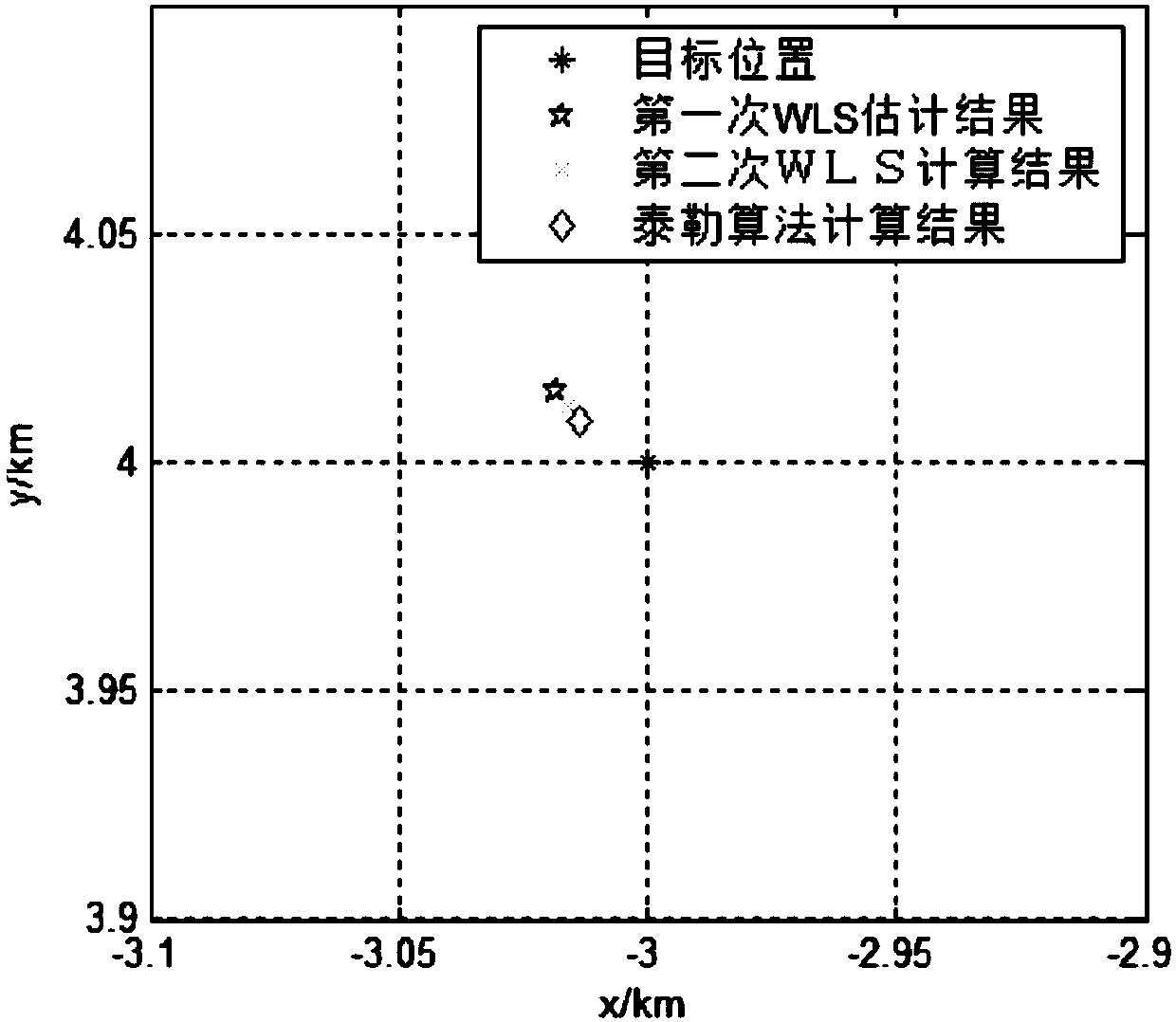A Multiple-Input Multiple-Output Radar Near-Field Positioning Algorithm
A positioning algorithm and multi-output technology, applied in the direction of radio wave reflection/re-radiation, using re-radiation, measuring devices, etc., can solve the problem of low accuracy of the target position, and achieve the effect of improving accuracy and precise positioning
- Summary
- Abstract
- Description
- Claims
- Application Information
AI Technical Summary
Problems solved by technology
Method used
Image
Examples
Embodiment Construction
[0044] The present invention will be further described below in conjunction with the accompanying drawings. The following examples are only used to illustrate the technical solutions of the present invention more clearly, but not to limit the protection scope of the present invention.
[0045] Such as figure 1 Shown, is the algorithm flowchart of the present invention, comprises the steps:
[0046] Step 1: Use the idea of chan algorithm to perform the first weighted least squares estimation;
[0047] Step 101: Establish a positioning model and calculate the distance from the target to the transmitter:
[0048] In two-dimensional Cartesian coordinates, assume that the target position is (x,y); the number of transmitting radars is M, and the coordinates are (x tk ,y tk ), k=1,2...M, the transmitter transmits orthogonal signals; the number of receiving radars is N, and the coordinates are (x rl ,y rl ), l=1,2...,N, designate the Nth receiver as the reference receiver, and...
PUM
 Login to View More
Login to View More Abstract
Description
Claims
Application Information
 Login to View More
Login to View More - R&D
- Intellectual Property
- Life Sciences
- Materials
- Tech Scout
- Unparalleled Data Quality
- Higher Quality Content
- 60% Fewer Hallucinations
Browse by: Latest US Patents, China's latest patents, Technical Efficacy Thesaurus, Application Domain, Technology Topic, Popular Technical Reports.
© 2025 PatSnap. All rights reserved.Legal|Privacy policy|Modern Slavery Act Transparency Statement|Sitemap|About US| Contact US: help@patsnap.com



